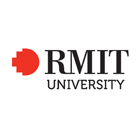Master of Statistics and Operations Research
- Home
- Courses
- RMIT University (Royal Melbourne Institute of Technology University)
- Master of Statistics and Operations Research
Master of Statistics and Operations Research
The Master of Statistics and Operations Research will develop your knowledge of statistical and operations research methodologies. You’ll combine a theoretical foundation with practical applications of current techniques employed by practising engineers, scientists and other professionals in industry, research, consulting, teaching and business. This is achieved using statistical software accompanied…
Categories
COURSE DESCRIPTION
The Master of Statistics and Operations Research will develop your knowledge of statistical and operations research methodologies.
You’ll combine a theoretical foundation with practical applications of current techniques employed by practising engineers, scientists and other professionals in industry, research, consulting, teaching and business.
This is achieved using statistical software accompanied by an in-depth understanding of the statistical processes involved.
You will be particularly knowledgeable, creative and critical in the sense of how you interpret and analyse data. You will also be equipped with the ability to apply knowledge to solve a wide range of real-world problems.
The program includes an industry project component and/or minor thesis which will develop your consulting and research skills.
Based on your previous studies you may be eligible for exemptions that may shorten your program duration to one year full-time.
Career
Demand for statistical and operations research skills is growing in a data-driven world.
Graduates are employed by a variety of scientific, commercial and government enterprises, most commonly as data scientists, statisticians, business analysts, consultants, modellers and researchers.
EDUCATIONAL INSTITUTION
Since its establishment in 1887, Royal Melbourne Institute of Technology University (RMIT) has been meeting the needs of the community surrounding it. Originally a Working Men’s College, RMIT showed its flexibility during World War Two, training over 20,000 servicemen in communications to help with the war effort.Now, it is a true pioneer in international education, championing cross-border study opportunities with campuses in various countries. Granted formal university status in 1992, RMIT is ranked 21st in the world for universities that are less than 50 years old.RMIT is the largest higher education institution in Australia, currently with more than 82,000 students. With nearly 20% of those students coming from overseas, it is a university that truly welcomes diversity and is a melting pot of different cultures. RMIT has three campuses in Vietnam, a European hub in Barcelona, an office in Indonesia, and partners with 200+ institutions in 42 countries to provide study opportunities worldwide.
Since its establishment in 1887, Royal Melbourne Institute of Technology University (RMIT) has been meeting the needs of the community surrounding it. Originally a Working Men’s College, RMIT showed its flexibility during World War Two, training over 20,000 servicemen in communications to help with the war effort.
Now, it is a true pioneer in international education, championing cross-border study opportunities with campuses in various countries. Granted formal university status in 1992, RMIT is ranked 21st in the world for universities that are less than 50 years old.
RMIT is the largest higher education institution in Australia, currently with more than 82,000 students. With nearly 20% of those students coming from overseas, it is a university that truly welcomes diversity and is a melting pot of different cultures. RMIT has three campuses in Vietnam, a European hub in Barcelona, an office in Indonesia, and partners with 200+ institutions in 42 countries to provide study opportunities worldwide.

